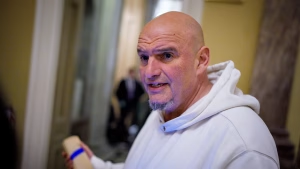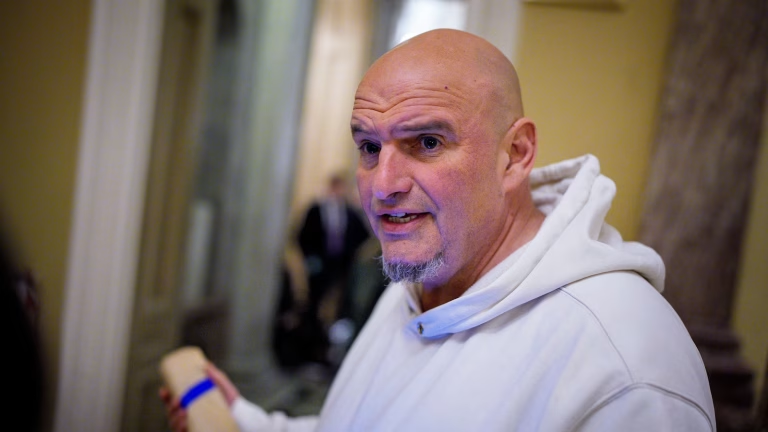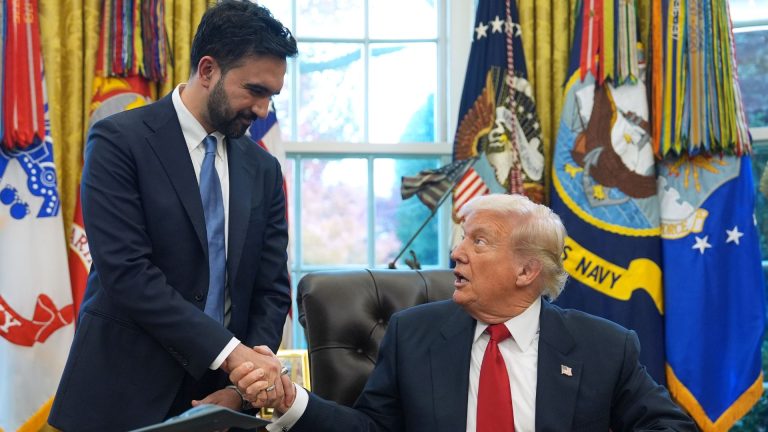After forty-three exhausting days, the longest government shutdown in American history finally ended late Wednesday night. With one signature, President Donald Trump reopened the federal government, restoring paychecks, restarting critical programs, and ending the political standoff that had frozen Washington for more than six weeks.
Federal workers can now return to their jobs, military service members will again receive the pay they were denied, and the more than 42 million Americans who rely on food assistance will see their benefits resume. For millions across the country, the shutdown was not an abstract debate in Washington — it was a direct hit to their wallets, their families, and their stability.
As he signed the temporary funding bill — a continuing resolution that runs through January 30 — Trump did not hold back in assigning blame.
“The country has never been in better shape,” he said. “We went through this short-term disaster with the Democrats because they thought it would be good politically. It’s an honor now to sign this incredible bill and get our country working again.”
Whether Americans like Trump or not, one thing is certain: his claim that Democrats engineered political theater at the public’s expense is a sentiment echoed by millions who watched the shutdown drag on without explanation or strategy.
How Much Did the Shutdown Cost America? Try $92 Billion.
According to Kevin Hassett, director of the National Economic Council, the shutdown’s economic damage was staggering. Speaking to reporters shortly after the government reopened, Hassett detailed the full extent of the financial wreckage.
His estimate:
$15 billion lost per week.
$92 billion in total economic damage.
On top of that:
-
GDP growth dropped by 1 to 1.5%
-
Roughly 60,000 private-sector jobs vanished
-
Countless businesses tied to federal contracts faced layoffs, closures, or emergency loans
And that number doesn’t even capture the indirect losses — delayed tax refunds, stalled small-business grants, halted federal inspections, and paused regulatory approvals that rippled across industries from aviation to agriculture.
Economists described it as “a self-inflicted recession in miniature.”
And for what? No new legislative victories. No concessions. No policy changes. Nothing but bruised Democratic leadership and a furious electorate.
Schumer’s Gamble: A Shutdown With No Endgame
From the moment the shutdown began, Senate Minority Leader Chuck Schumer positioned himself as the face of Democratic resistance. Publicly, he insisted the standoff was a principled stand on federal spending and health policy. Privately, according to several reports, Democratic strategists believed shutting down the government would damage Trump politically.
But the plan collapsed — spectacularly.
As the shutdown dragged past 20 days… then 30… then 40… cracks emerged inside the Democratic caucus. Constituents demanded answers. Food assistance programs warned they were days from running dry. Non-essential federal workers missed two full paychecks. And polls began showing that independent voters overwhelmingly believed Democrats were prolonging the crisis.
The gamble backfired. Instead of embarrassing Trump, Democrats wound up sparking a national backlash.
One House Democrat, speaking anonymously to a reporter, reportedly described the strategy as “a historic miscalculation.”
Meanwhile, the shutdown was hurting precisely the people Democrats claimed to be fighting for.
Millions Used as Leverage: SNAP Recipients, Federal Workers, and Military Families
Throughout the shutdown, Democratic leadership invoked sympathetic groups — military families, federal employees, federal contractors, food-assistance recipients — as casualties of Trump’s “refusal to compromise.”
But what Americans saw instead was this:
-
Military families missing pay
-
Federal workers lining up at food banks
-
TSA agents working without compensation
-
Active-duty service members relying on charity drives
-
SNAP benefits on the brink of collapse
And all the while, high-level political leaders continued their press conferences, their messaging wars, and their strategizing — insulated from the pain felt outside the Beltway.
Republicans argued that this wasn’t just political brinkmanship — it was holding Americans hostage to score points.
https://twitter.com/nicksortor/status/1989014576797565010
Hassett: “We Stopped the Runaway Inflation. But There’s More Work Ahead.”
While explaining the economic fallout, Hassett also addressed broader concerns about the state of the economy under Trump’s administration.
He emphasized that inflation — which had spun out of control in the prior administration — had been brought to heel. He said the administration’s policies had stimulated wage growth and increased real incomes.
But he acknowledged the reality many households still feel:
“We understand that people look at their pocketbooks, at the price of groceries, and know there’s still work to do.”
Yet, Hassett argued, the path forward was clear: continued work on economic stability, energy production, and deregulation — not political stunts that cost the country billions.
Democrats Played Politics — Trump Delivered Outcomes
For Republican leadership, the contrast between the two parties during the shutdown could not have been sharper.
-
Democrats shut down the government with no clear demands
-
They refused compromise even as the economic damage worsened
-
They misread voter sentiment and internal polling
-
They miscalculated Trump’s willingness to endure the pressure
-
And they failed to secure a single policy win in exchange for $92 billion in losses
Trump, meanwhile, framed his role as one of cleanup and restoration — reopening the government, stabilizing critical programs, and recommitting to economic recovery.
Even critics acknowledged that Democrats appeared disorganized throughout the standoff, unable to articulate what exactly they hoped to gain.
Trump supporters pointed to the episode as yet another example of Democratic leadership prioritizing optics over governance, and political messaging over real outcomes.
The Shutdown Ends, But the Political Damage Remains
As workers return to federal buildings, as service members receive restored pay, and as nationwide systems come back online, the shutdown’s political scars are still fresh.
Polling in the final week of the shutdown showed:
-
Schumer’s favorability rating fell to its lowest point in years
-
Independent support for Democratic leadership collapsed
-
Republicans gained momentum among working-class voters
-
Trust in Democratic economic management plunged
Inside Washington, Democrats are already grappling with internal fallout. Several moderates have publicly questioned Schumer’s judgment. Some privately believe leadership will face internal challenges before the next election cycle.
The shutdown may be over — but the political bill has only begun to come due.

James Jenkins is a celebrated Pulitzer Prize-winning author whose work has reshaped the way readers think about social justice and human rights in America. Raised in Atlanta, Georgia, James grew up in a community that instilled in him both resilience and a strong sense of responsibility toward others. After studying political science and creative writing at Howard University, he worked as a journalist covering civil rights issues before dedicating himself fully to fiction. His novels are known for their sharp, empathetic portraits of marginalized communities and for weaving personal stories with broader political realities. Jenkins’s breakout novel, Shadows of Freedom, won national acclaim for its unflinching look at systemic inequality, while his more recent works explore themes of identity, resilience, and the fight for dignity in the face of oppression. Beyond his novels, James is an active public speaker, lecturing at universities and participating in nonprofit initiatives that support literacy and community empowerment. He believes that storytelling is a way to preserve history and inspire change. When not writing, James enjoys jazz music, mentoring young writers, and traveling with his family to explore cultures and stories around the world.









